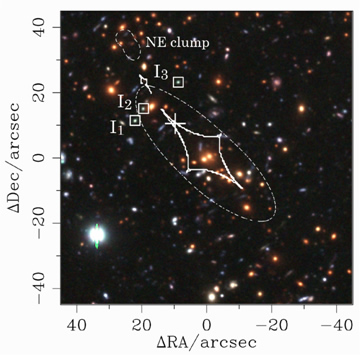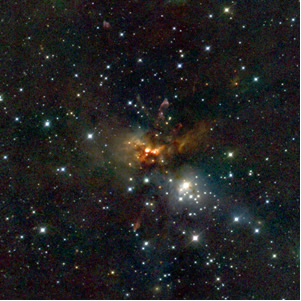Our activities in optical-IR astronomy have been rapidly growing in recent years. We have a dozen researchers (staff, postdocs and students) who are pursuing their own interests, ranging from asteroids to distant galaxies. Our institute has access to Canada-France-Hawaii Telescope (CFHT), one of the most effective and productive 4-m telescopes in the world. To stay competitive in an era of the new 8-10m telescopes, CFHT has unique instruments such as MegaCam, WIRCam (wide field cameras at optical and near-infrared wavelengths, respectively) and ESPaDOnS (spectropolarimeter at high spectral resolution). Our institute members have been using those instruments for a variety of topics: photometric redshifts of distant galaxies, galaxy clusters, interacting galaxies, searching for afterglows of gamma-ray bursts, star formation in nearby galaxies, circumstellar environments of young and evolved stars, extremely low-mass objects such as brown dwarfs, triggered star formation etc. MegaCam and WIRCam will also be used for optical follow up observations of galaxy clusters observed by AMiBA (Array for Microwave Background Anisotropy), which has been recently developed by our institute.
Some of us also pursue our interests using other telescopes (Subaru, Gemini, Spitzer Space Telescope, Lulin 1-m Telescope etc.) by both attaining our own observing time and accessing archival data. Recent research topics using these telescope include: weak-lensing in galaxy clusters, jets, winds and protoplanetary disks associated with young stellar objects , massive star-forming regions and HII regions, and searching for optical afterglows of gamma-ray bursts.
Furthermore, the TAOS (Taiwan-American Occulting Survey) project lead by our institute is also in progress to observe asteroids using the occultation of background stars. See the TAOS page for details.

Subaru/Suprime-Cam image of the distant cluster of galaxies RXJ0152 at z=0.83 (Umetsu et al. 2005, PASJ, 57, 877). The caustic of the gravitational lens due to the cluster is indicated by the thick white line. The predicted amplification and images of a background galaxy at z=3.9 (cross) fit quite well the spectroscopic and imaging observations of the three images, I1, I2, and I3. Since this galaxy is apparently bright for its redshift due to magnification, it serves as a good high-redshift target on which we can make extensive and detailed studies based on multi-wavelength imaging and spectroscopy. A more detailed modeling of the lens mass distribution is also important because a well-constrained lens mass model in conjunction with different sets of multiple images with suitable redshifts serves as a powerful probe of the geometry of the universe.

Massive star-forming region S233-IR observed using CFHT-WIRCam (blue: J, green: H, red: H2 — Yan et al., in preparation). Massive star formation is a dramatic and energetic event compared to low-mass star formation, and its dynamical processes are much more complex and thereby less well understood than the low mass case. Ultraviolet radiation from massive stars ionizes the surrounding gas, and these ionized nebulae (HII regions) expand and interact with the ambient molecular clouds. This compresses the surrounding gas, perhaps triggering another generation of star formation. In addition, UV radiation from massive stars can evaporate the circumstellar disks associated with nearby young stars, possibly affecting the planet formation occuring there. In general, star forming regions are heavily embedded in their natal dusty molecular clouds and consequently are best observed at infrared and radio wavelengths. In the image above infrared wide-field imaging using WIRCam unveils the detailed star formation processes and phenomena in the star formation region S233-IR, which contains several HII regions and embedded young clusters.


